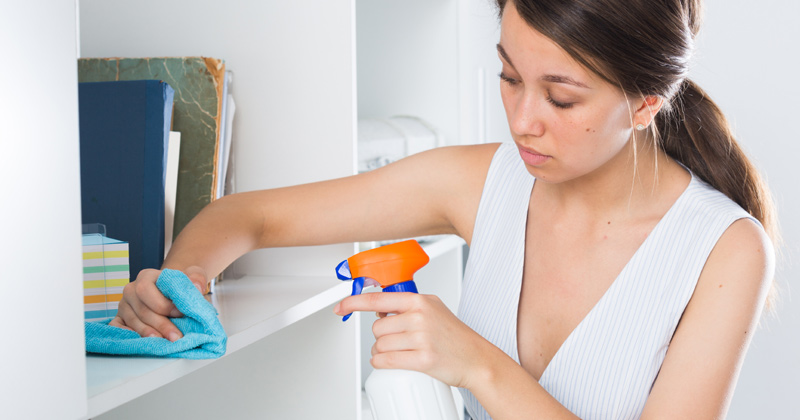The life as we knew before the corona outbreak is returning but it might present a higher risk of infection as most houses and office buildings are enclosed because of the air conditioning. If there is someone inside who is already infected with Coronavirus, it presents a much greater risk as the virus concentration is highest indoors. But how to keep indoors Corona-free & the risk of infection be kept as low as possible? Let’s find out.

Offices, restaurants, universities, or malls, there is often little air exchange in these closed spaces. If you stay indoors with many other people for a long time, you are at an increased risk of contracting the coronavirus.
Like SARS-CoV-2 or coronavirus, many other pathogens also spread through the air. The larger corona outbreak of the second wave could be due to air transmissions. Most of these buildings are fitted with air conditioning in which the air is continuously pulled out of the room, cooled, and pushed back into the room, to lower the temperature of the room or the building. Researchers suggest fitting high-performance filters and UV rays to prevent viruses from being distributed through such a system. So, How can the interiors be made and kept Corona-free?
High-Performance Filter – How to Keep Indoors Corona-Free
The high-performance filters, also known as Hepa filters, have been used in hospitals, specifically in operation theaters for many years. They consist of synthetic fibers stacked in several layers. When the air passes through these layers, the minute particles are separated from the air by filters and remain there. The Coronaviruses could also be filtered out in this way.
Disinfection by Nebulization
Some companies and organizers disinfect rooms by misting disinfectant. Various means are used, some of which are not entirely harmless. For more than 100 years, room disinfection using formaldehyde has been used. It is an extremely effective disinfectant, however, and formaldehyde can also cause cancer, which means that a room cannot be entered immediately.
Alternatively, hydrogen peroxide is also used. One huge advantage of using hydrogen peroxide is the residue-free decomposition into water and oxygen. However, even with this method, you have to wait for a longer time, as hydrogen peroxide can be harmful if inhaled.
Suggested Read: How to Store the Mask in a Car and How to Disinfect the Car Properly? Let’s Find Out

The remedy that we should use to disinfect rooms should be compatible and naturally degradable to protect the allergic people. The safe disinfectant containing hydrogen peroxide with sustainable stabilizers is distributed in the air via a nebulizer or an existing ventilation system. It clears around 99% of the bacteria and viruses in the room.
UV Radiation – How to Keep Indoors Corona-Free
Bacteria and viruses can be killed by UV rays, however, the method is hardly suitable for room disinfection. For the rays to work at all, the distance between the radiation source and the object should be ten to 30 centimeters. Indoor air disinfection would only be possible if the air circulates and germs are thereby repeatedly led past the radiation source. In the food industry, the process can still be used sensibly, like for disinfecting packaging films.
Air Conditioners as a Simple Alternative
Air conditioning systems are probably more common than complex disinfection processes. They ensure a supply of fresh air from the outside and cool or warm it. The old air is sucked off and then either discharged outside or brought back into the interior together with fresh air. In any case, there is also a reduction in the germ concentration in the indoor air.
Researchers suggest air conditioning systems with high-quality filters for cooled rooms with circulating air operation, which is found in operation theaters. For systems in offices, hotels, shopping malls, a high proportion of outside air offers the best protection against infection.

In situations such as we are currently experiencing, we recommend keeping the proportion of recirculated air in air conditioning and ventilation systems as low as possible. The transmission of coronaviruses via ventilation or air conditioning systems can almost be ruled out if the systems are operated properly and regularly maintained.
Ventilate – The Simplest Technique for Disinfecting Homes
Even without large technical equipment, the risk of infection indoors can be reduced. Ventilating with wide-open windows is the quickest way to exchange air. Indoor spaces are usually warmer than the outside air so that there is a draft from the inside to the outside. This can reduce any virus concentration in the interior. This also reduces the risk of infection, however, an infection cannot be ruled out one hundred percent.
Suggested Read: How to Clean Gold Jewelry: 5 Easy & Efficient Ways to Clean Jewelry at Home
Even if everyone has heard it endlessly, wearing masks and observing the distance rule are still important measures to protect against corona infection. Wearing a simple face mask can significantly reduce airflow along with maintaining a safe distance.
By following these tips & techniques on how to keep indoors Corona-free you can reduce the chances of your home or office getting contaminated.


